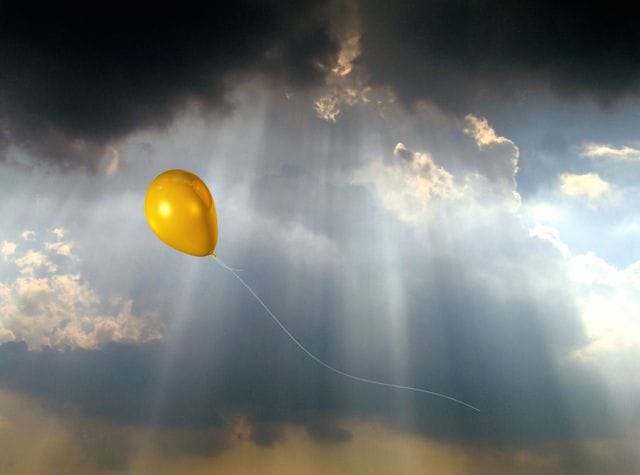
Chance is a strange thing. Over the course of history, truly astonishing things have happened — the man who won the lottery twice in one day, or the woman who was struck by lightning four times, for instance — but most of these circumstances have been dissected by statisticians and scientists, and demystified.
Sometimes though, occurrences are so eerily synchronous that they can’t be explained with logic. The most mind-blowing story we’ve ever read starts with a gold balloon.
***
In June 2001, on a small farm in Staffordshire, England, a 10-year-old girl named Laura Buxton was celebrating her grandparent’s 50th wedding anniversary. At one point, urged by her grandfather, Buxton wrote a note — “Please return to Laura Buxton,” along with her address — on a small card, attached it to a gold mylar balloon, and released it into cloudless sky. As the balloon rose high above the party and danced with the wind, Buxton’s grandfather patted her on the back. “Maybe if you’re lucky,” he said, “it won’t get stuck in a tree somewhere.”
Two days later, 140 miles away in a Milton Lilbourne, a farmer was checking on his cattle in a field and came across the deflated balloon in his neighbors’ hedge. He was about to discard it as trash, when he noticed the note; his neighbors had a daughter named Laura, so he passed it along to them. This began a series of extremely uncanny coincidences.
The girl the farmer gave the balloon to was also named Laura Buxton, and was also just shy of ten years old — but she was an entirely different girl. When she received the balloon, she wrote a letter to the Laura Buxton who’d sent it, explaining that she was also Laura Buxton. After some ensuing confusion (and parental skepticism), the two planned to meet up.
A three hour drive apart, the two Laura Buxtons not only shared the same name, but were nearly the exact same age, were the same height (which was unusual, considering they were both well above average for their age at 4 feet, 7 inches), had brown pigtails and blue eyes, and were in Year 5 in primary school. In a Radiolab interview, the girls recalled the astonishing similarities that arose as they spoke for the first time: they both had three-year-old female black labrador dogs, grey rabbits, and guinea pigs with identical markings (orange spots on hind legs). Upon meeting, they unintentionally chose to wear identical outfits — a pink sweater, and jeans.
***
Certainly, some aspects of this story can be reasoned statistically. The girls’ identical hair color and style (brown, pigtails), eye color (blue), and height (four feet, seven inches) aren’t that shocking as stand-alone facts: they were, after all, from the same geographic region. Their identical stable of pets, though odd, doesn’t seem impossible — all three are common household pets in the English countryside. But for a balloon to route a 140-mile course directly to another, nearly identical 10-year-old girl with the same name is nothing short of miraculous.
David J Hand, a professor of mathematics at Imperial College, London, and author of The Improbability Principle, a book that explores the statistical probabilities of extremely unlikely circumstances, disagrees. While he admits that “it would be a brave person who dismissed these as mere chance events,” he thinks there is a deeper implication at work regarding incidents like this.
Citing what he calls the “improbability principle,” Hand says that highly improbable events are commonplace, and are merely “a consequence of the mathematics of chance coupled with the psychology of humans.” Strange things happen all the time, he reasons, and we vastly underestimate the chance of coincidences:
“It certainly looks as if the Universe is trying to tell us something that we are just not quite getting. [But] the Universe is a booming, buzzing confusion of events. Uncountable things are happening around us all the time. And we ignore almost all of them. So what is it that makes us pay attention to some events, but not to most? It’s simply that some of them have significance for us. So their relevance draws our attention, and we notice them, not even being aware of all the trillions of other things going on.”
But Laura Buxton and her doppelgänger refuse to believe the incident was anything other than fate at work. Convinced that some force greater than mere chance had brought them together, the two formed a bond; thirteen years later, they are still friends.
“The girls still meet up when time and commitments allow them,” the mother of Laura Buxton #1 told a local paper. “We have no idea why this happened but it did, and out of it has come a wonderful friendship.”
This post was written by Zachary Crockett. Follow him on Twitter here, or Google Plus here.



